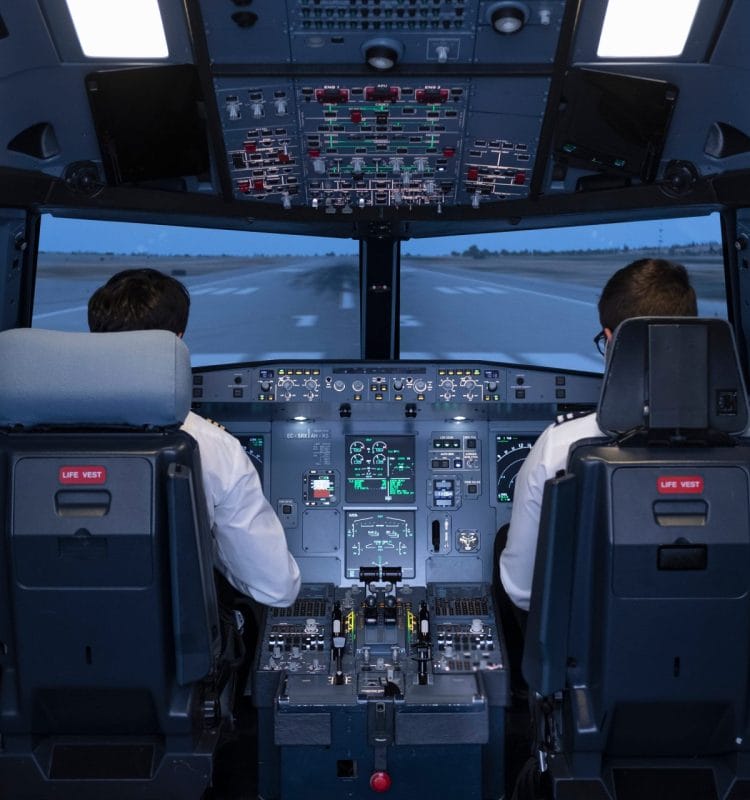EN


In the dynamic world of aviation and aerospace, where precision and safety are paramount, Smart Eye’s pioneering eye-tracking technology is reshaping the way we approach flight safety and pilot performance. With a mission to revolutionize human-machine interaction, Smart Eye is making a significant impact both on the ground and thousands of feet above. This article delves deeper into how Smart Eye is propelling aviation and aerospace into the future.
Piloting Progress: At the forefront of innovation, Smart Eye has developed the world’s most advanced remote eye trackers, designed to empower aviation and aerospace researchers, pilots, and operators. These technologies offer unparalleled insight into human behavior, setting new safety benchmarks within the industry.
Smart Eye’s technologies serve multiple crucial functions within the aviation sector. First, they help train the next generation of pilots, aiding in the correction of scanning techniques that will prove invaluable during their careers. But it doesn’t end there. Smart Eye’s eye-tracking technology extends into the skies, where it plays a crucial role in ensuring pilots remain alert and attentive while monitoring instruments. NASA itself employs Smart Eye’s technology within its Flight Deck Simulators and Research Flight Decks to monitor pilot states and behaviors, emphasizing its vital role in the aviation industry.
Human Factors Research: The aviation and aerospace sectors are highly automated, relying on smooth human-machine interactions for the safety and efficiency of operations. Smart Eye’s eye trackers are instrumental in furthering human factors research in these sectors. By analyzing how pilots perceive and respond to automation, Smart Eye contributes to smoother and safer air travel. Its high-precision technology allows researchers to accurately analyze human factors such as spatial disorientation and performance, ensuring the utmost safety and efficiency.
Webinar: Unraveling Remote 3D Head and Eye Tracking in Aviation
Smart Eye’s technology is often associated with complex terms such as 3D tracking, remote tracking, and multi-camera systems. In a bid to demystify these terms, Smart Eye recently offered a comprehensive webinar for attendees to learn more. Drawing on over two decades of industry experience, the webinar introduces participants to the unique features of remote 3D multi-camera eye tracking. It serves as a valuable resource for those keen to gain a better understanding of the technology underpinning aviation research.
Pilot Monitoring Systems: Within aviation, close to half of accidents can be attributed to insufficient scanning of vital parameters within the cockpit. This is where Smart Eye’s eye trackers come into play. They analyze pilots’ gaze movements, head poses, pupillometry, and eyelid movements to detect distractions and drowsiness. The result is a central role in pilot monitoring systems, allowing for the detection of scanning errors and ultimately enhancing flight safety across all aircraft.
Flight Training: The backbone of safe air travel is highly skilled pilots. In flight training, Smart Eye’s technology is instrumental in refining the scanning techniques of future pilots. The real-time data gathered by eye trackers is invaluable in identifying the strengths and weaknesses of pilot recruits, ultimately boosting their performance levels.
In conclusion, Smart Eye’s eye tracking technology is revolutionizing aviation and aerospace. It is setting new safety standards, improving human-machine interaction, and facilitating critical human factors research. As the aviation industry looks to the future, Smart Eye’s innovative solutions are leading the way, propelling us toward unprecedented heights in terms of safety and performance.
Interested in eye tracking for pilot training? Download our Comprehensive Guide to Eye Tracking Technology for the Aviation Industry here, or contact us today to schedule a demo!
